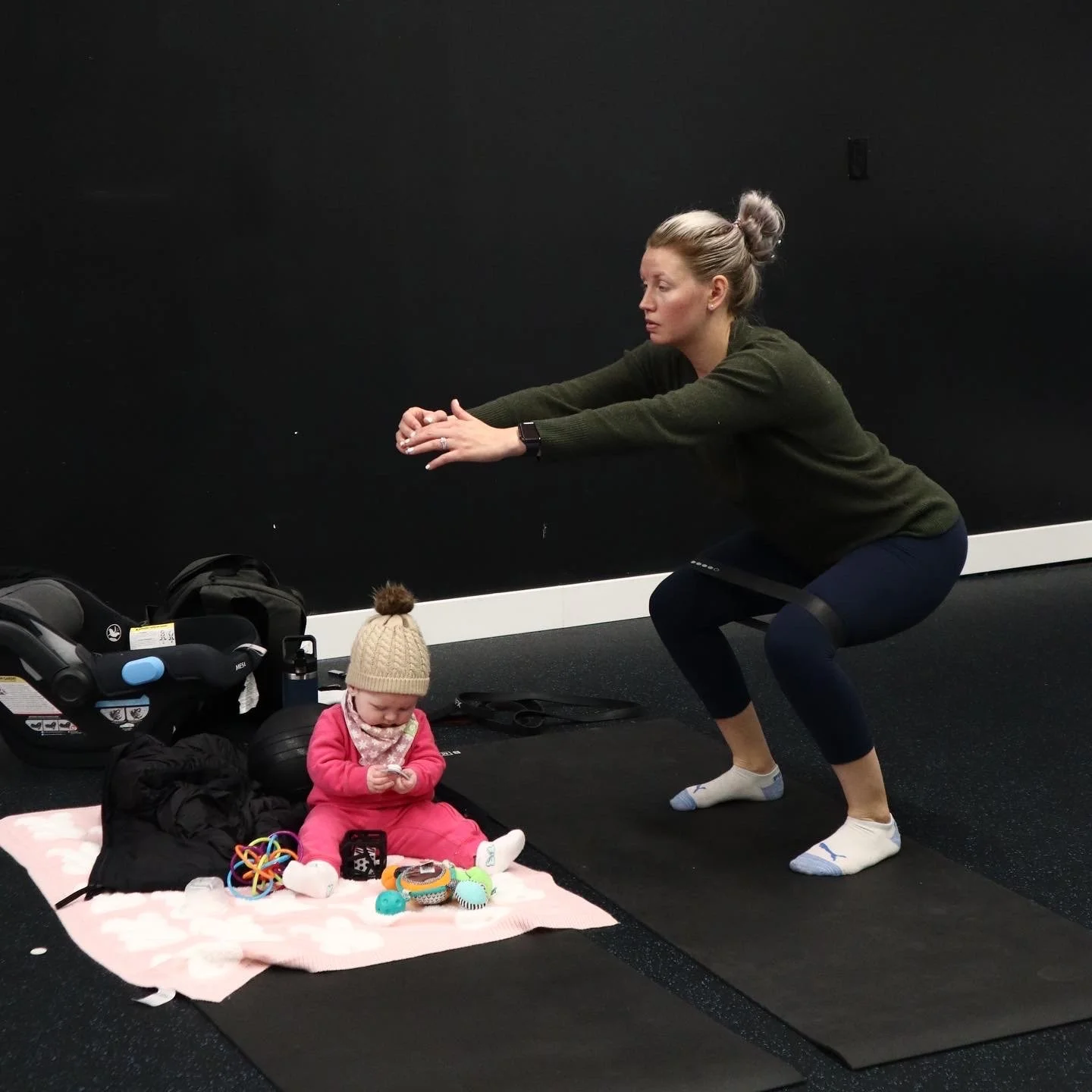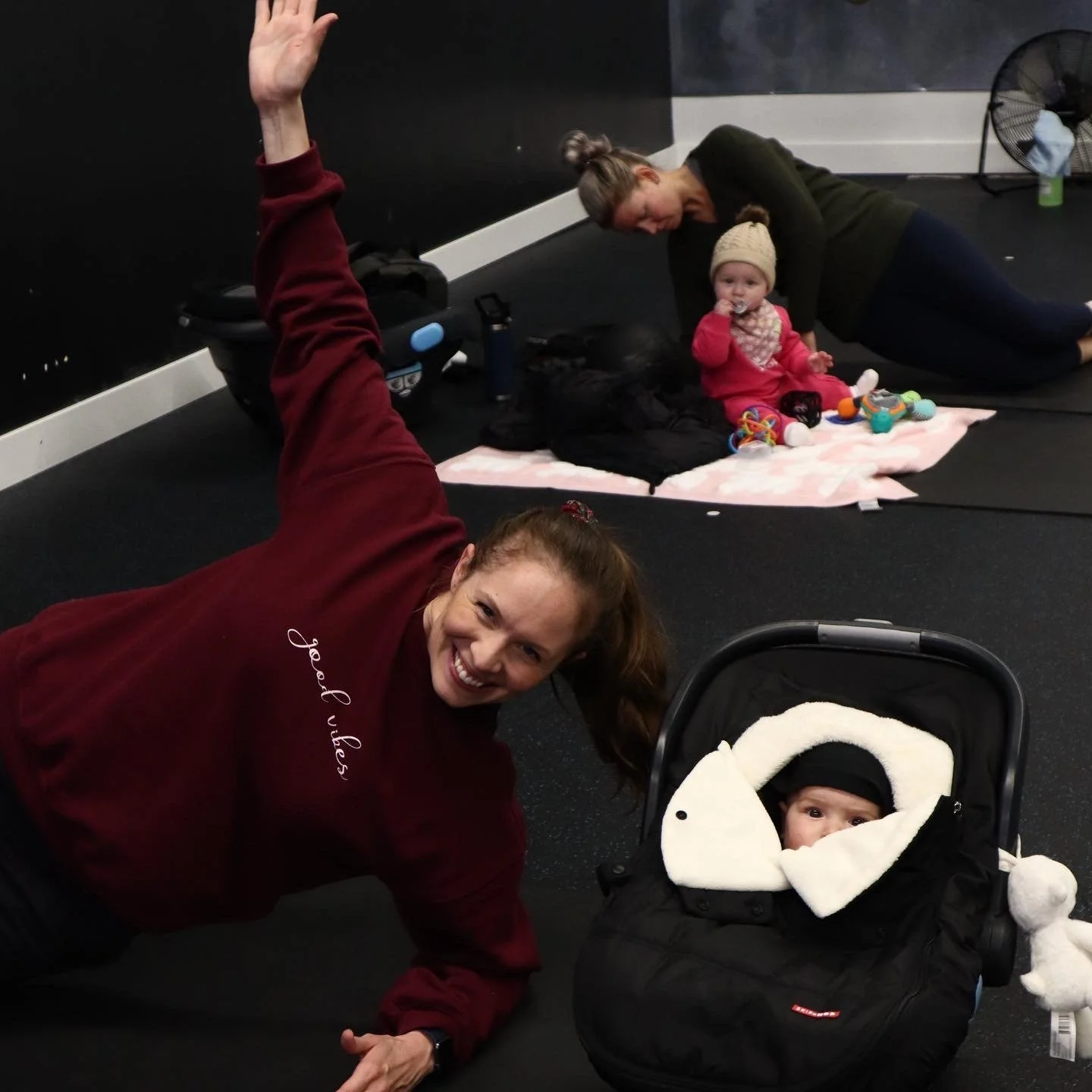WHY DO WOMEN NEED POST NATAL REHAB?
Sweating, heavy breathing, aches, pains and groans. You’d think I am describing your recreation league soccer game last year. Nope, that’s labour. It’s a 40 week long tournament with an epic finale of your strongest feat yet. Birth is the biggest marathon, game, sporting event of your life, the most challenging task you ask your body to complete. Yet, once the child is born there is NO rehab process, NO care for mom, and NO more thoughts about what your body may be going through.
Health care has conditioned us to think of mom’s body after birth as a complete dumpster fire. Marketing and culture tells us scars and stretch marks are to be masked, tears and changes are not to be spoken of, and mom’s body is told to return to “normal” as soon as possible.
Yet, when an athlete comes off the ice after the Stanley Cup absolutely exhausted, when Usain Bolt crosses the finish line after giving it his all, when Connor McGregor comes out of the octagon beat up and bruised, or when Simone Biles twists an ankle after a handspring triple front flip they ALL enter a specific rehabilitation plan led by a fitness professional or therapist.
But for women after birth, nothing?! We have better rehabilitation programs for sprained ankles then we do for women after birth?! Let’s let that soak in for a second…
THE PRESSURE
Not only have you gone through life’s biggest sporting event, but now you’re asked to be “presentable” and to show off your “transformed pre baby body” as soon as possible. You’re asked to match photoshopped highlight reel images on Instagram as d-list celebrity moms trot around with flawless hair, bikini, and family coordinated outfits. You scroll through your phone looking at all the “perfect” mom’s and wonder how your macaroni cheese stained sweat pants, messy bun, and crying diaper full baby will ever keep up.
THE ANATOMY
Your core is made up of many different muscles, most importantly in relation to post natal rehab is the Transverse Abdominis (TVA). The TVA is a corset type muscle that lies deep within the core, it pulls you flat and hugs around your body meeting front and centre down the midline of your body. It stabilizes the spine and the pelvis.
When you are pregnant your body release a hormone called Relaxin. This helps “relax” the tissues in your body including your core and pelvic floor. This allows your TVA to separate and your pelvis to expand to make room for the baby.
DIASTASIS RECTI
On the left is a non-pregnant body (I hate that this diagram labels that “normal” both of these cores are normal given that someone is pregnant in the second image). The second image (right), displays what a pregnant body may look like at the anatomical level. This is labeled as Diastasis Recti (DR), DR is the degree of separation in the core (where you grow your lil’ human).
Note, that the second image could occur in overweight individuals or those who suffer major injury and therefore as a result develop poor core stability.
Symptoms of Post Natal Diastasis Recti:
Bulge or ridge that runs down the middle of the abdomen
Low back pain
Weak abdominal muscles
Difficulty lifting objects
Difficulty performing routine tasks
Poor posture
Bladder incontinence
Prolapse (sharp pain in the core region from organs “falling” through the DR gap)
Your next question is likely, “how much of a separation is “normal”?”
Well the answer is, it depends. Separation has to occur during pregnancy. Some women may have a larger DR separation, while others may have barely any at all! It can even vary from first, second and third pregnancy. Typically from our experience and what we have seen in hundreds of women going through our post natal rehab program is that if women are active before pregnancy then their rate of DR is typically less. It is also likely that they will recover quicker and have less complicated births. This is due to muscle memory. Consider this, if we ask you to flex your TVA, can you do it on command? If yes, awesome! If no or you’re not sure, that’s okay we can teach you that in the gym!
Did you know: In my hockey training days many professional female athletes failed TVA strength tests?! We played the highest level of hockey possible for women and we still didn’t have the right training for our TVA.
Now imagine you are about to give birth, you receive your epidural, and you are starting to lose feeling from your waist down. If you have the correct muscle memory (from deadlifting, squats, core training + more), then likely you’ll still be able to contract your core even as that “connection” starts to fade as the epidural gets stronger. If you haven’t been training then it may be harder to connect to those muscles when push comes to shove (literally). This can lead to complicated births and more delayed healing afterwards.
It’s never to late to begin your post natal rehabilitation. We have seen women who have eight year old kids who still suffer from Diastasis Recti. It’s often communicated to me as “I feel as though no matter how hard I work in the gym my body always carries an “extra pouch””, accompanied by low back pain and incontinence. After we perform our DR testing, we are sometimes even able to fit up to a fist width between the abdominal walls and push all the way back to meet the organs (a fist height deep!). Other women may have little to no separation, yet the core doesn’t feel to be as strong as it could be.
POST NATAL REHAB AND FITNESS:
This stresses the importance for all women to go through our Post Natal Rehab course before returning to regular fitness programs. Some women may need to close a large gap while others may need to just strengthen the core that has already returned to place naturally due to past fitness levels or genetics.
Our Post Natal Rehab and Fitness program is available both in the gym bi-monthly and online. In just 8 sessions we help close the gap (literally) in your health and fitness. We ensure women get the proper care and rehabilitation postpartum and that no mom feels left behind like an empty vessel. At our classes you can meet other women with young babies and be supported by a community who cares about your long term health.
We don’t ask our personal trainer, hair dresser, or chiropractor to fix our cavities, so let’s ensure we ask post natal certified personal trainers and pelvic floor physiotherapists to look after our rehabilitation post pregnancy. At Jolt, we will refer you to pelvic floor specialist if need be. At Jolt we will rehab you back to optimal movement and performance. At Jolt we will increase your quality of life. At Jolt we will ensure that women carry on better than ever after child birth.






